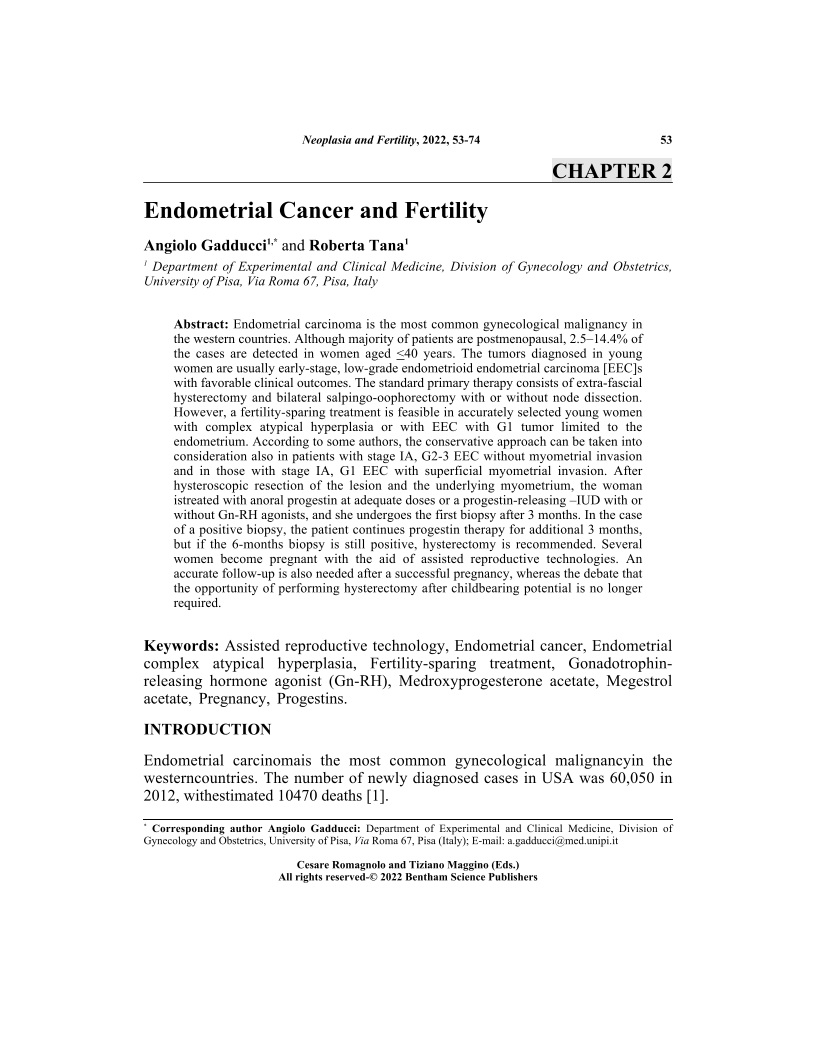Endometrial Cancer and Fertility

- Authors: Angiolo Gadducci1, Roberta Tana2
-
View Affiliations Hide Affiliations1 Department of Experimental and Clinical Medicine, Division of Gynecology and Obstetrics,University of Pisa, Via Roma 67, Pisa, Italy 2 Department of Experimental and Clinical Medicine, Division of Gynecology and Obstetrics,University of Pisa, Via Roma 67, Pisa, Italy
- Source: Neoplasia and Fertility , pp 53-74
- Publication Date: September 2022
- Language: English
Endometrial Cancer and Fertility, Page 1 of 1
< Previous page | Next page > /docserver/preview/fulltext/9789815050141/chap2-1.gif
Endometrial carcinoma is the most common gynecological malignancy in the western countries. Although majority of patients are postmenopausal, 2.5–14.4% of the cases are detected in women aged lt;40 years. The tumors diagnosed in young women are usually early-stage, low-grade endometrioid endometrial carcinoma [EEC]s with favorable clinical outcomes. The standard primary therapy consists of extra-fascial hysterectomy and bilateral salpingo-oophorectomy with or without node dissection. However, a fertility-sparing treatment is feasible in accurately selected young women with complex atypical hyperplasia or with EEC with G1 tumor limited to the endometrium. According to some authors, the conservative approach can be taken into consideration also in patients with stage IA, G2-3 EEC without myometrial invasion and in those with stage IA, G1 EEC with superficial myometrial invasion. After hysteroscopic resection of the lesion and the underlying myometrium, the woman istreated with anoral progestin at adequate doses or a progestin-releasing –IUD with or without Gn-RH agonists, and she undergoes the first biopsy after 3 months. In the case of a positive biopsy, the patient continues progestin therapy for additional 3 months, but if the 6-months biopsy is still positive, hysterectomy is recommended. Several women become pregnant with the aid of assisted reproductive technologies. An accurate follow-up is also needed after a successful pregnancy, whereas the debate that the opportunity of performing hysterectomy after childbearing potential is no longer required.
-
From This Site
/content/books/9789815050141.chap2dcterms_subject,pub_keyword-contentType:Journal -contentType:Figure -contentType:Table -contentType:SupplementaryData105

